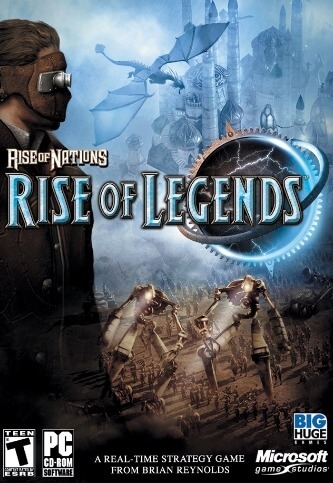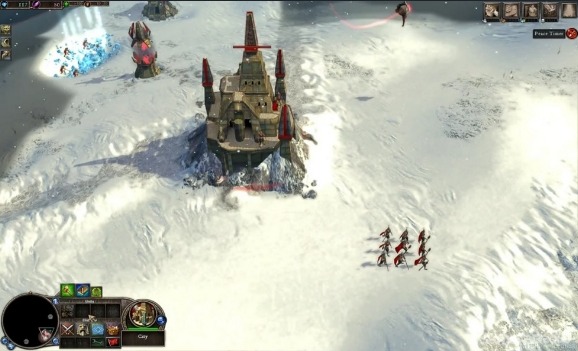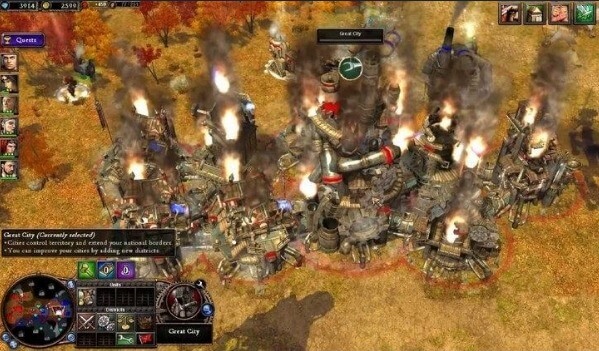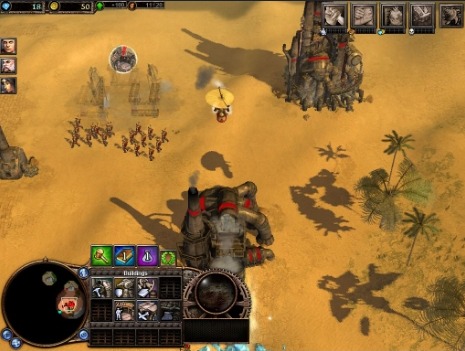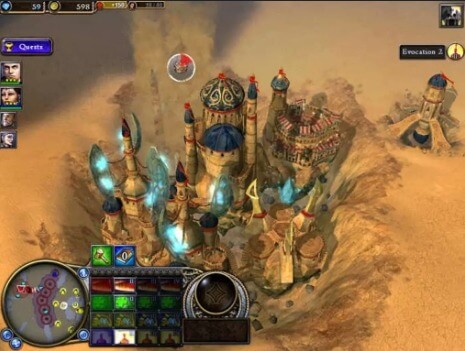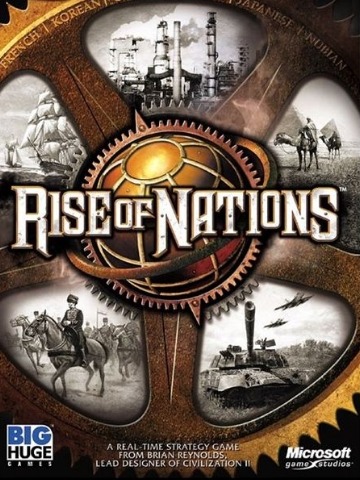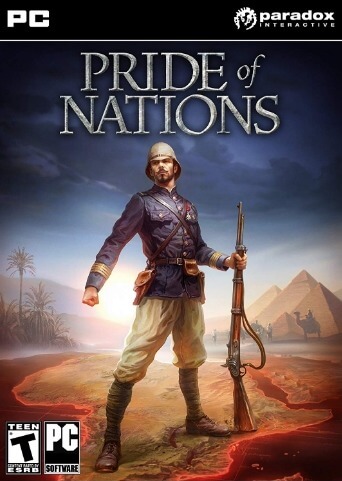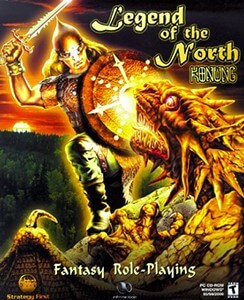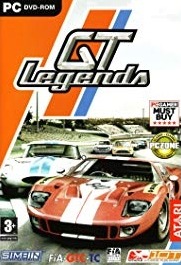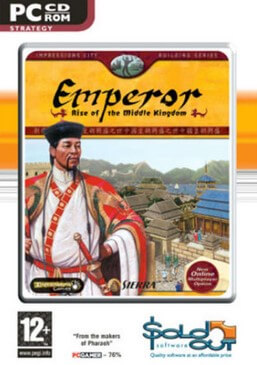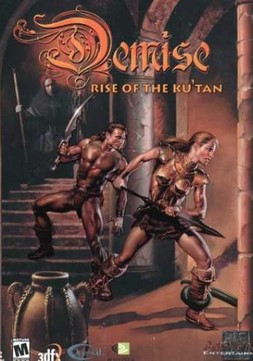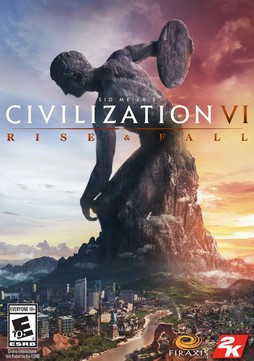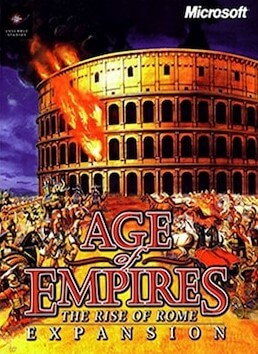The Vinci control the Land Leviathan, also upgradable to the King Leviathan. The Alin have the Glass Dragon, also upgradable to the Elder Glass Dragon. The Cuotl hold the City of Vengeance, upgradable to Great City of Vengeance. Three other master units, the Elder Glass Golem, the Moon Gorilla, and the Scavenger Boss can be created by the neutral sites the Glass Lair, the Moon Core, and the Scrapyard respectively. The Elder Glass Golem is a massive beast that resembles the Alins' Glass Golem but is much larger, has no ranged attack, and has a mana counter just like an Alin hero's. It also splits into 2 Adult Glass Golems when killed. The Moon Gorilla is a giant relative of the Cuotl Sun Idol with a powerful attack and siege attack ability, supplemented with a strong air attack and devastating trample. The Scavenger Boss acts like a Land Leviathan. Yet another unit that can be acquired in another map, created in the Moon Temple, is Ix the Moon God, the fourth Cuotl deity.
Hero units
Each race has its own set of Hero Units. Hero units are generally stronger, faster and more powerful than normal units, as well as having their own unique skill tree, which gives the hero powers, or upgrades existing powers. For the most part, powers act like spells, and are cast during the game, though there are some passive powers too. Heroes also level up (the conditions for levelling up varies), with each level increasing their stats. Heroes have to be summoned into the game, which costs a certain number of resources (different per hero), and multiple heroes can be summoned at the same time. As well, if a hero dies, he can be resummoned. There are three heroes per civilization, and these heroes have larger roles in the single-player campaigns along with other heroes not included in Single- and Multi-player Random Maps.
Single-player gameplay
The single player game is divided into three campaigns, one for each race in the game (although the "player character" throughout all three campaigns is Giacomo, the original Vinci hero, whose appearance and army changes depending on which campaign is being played). Each campaign presents the player with a large map of a region of Aio, divided into multiple city sections (similar to the board game Risk). The campaigns are divided into two segments: managing the Strategic Map and playing individual scenarios.
Strategic map
The strategic map is an overview of the current region that the campaign being played covers. It is divided into a number of smaller sections, each of which representing a scenario to be played. Each of these sections are colour-coded as well, representing which race (in the Alin campaign), or the army (in the Vinci and Cuotl campaigns) controls it. As well, the strategic map contains a representation of the player's army (represented by an avatar of Giacomo), as well as any enemy armies that are on the map, represented by an avatar of each of their heroes.
Each section of the region contains a capital city. Similar to cities in scenarios, capital cities can be upgraded with four different districts (Military, Merchant/Reactor, Industrial/Magic, Palace). The capital cities allow for management of four critical resources – Research, Military, Wealth and Hero:
Research points allow the player to upgrade their unit's abilities. A city will generate one research point the turn after adding a research/magic district. The Vinci use research points to upgrade units to more powerful versions; the Alin use research points to upgrade various statistics across their army or across a unit type.
Military points are used to expand the army that is provided at the start of a level. Military districts generate one military point per turn, starting the turn after being created, and provide defense from enemy armies. As well, cities with Military districts send free reinforcements when playing in an adjacent territory.
Wealth points allow the player to add further districts to their cities on the strategic map. Each city upgrade costs progressively more wealth points. Merchant districts can be added to cities, and generate one wealth point per turn, starting the turn after being built. As well, cities with Merchant districts send free caravans to the player's city when playing an adjacent territory.
Hero points allow the player to upgrade their heroes' powers and abilities. Hero points cannot be generated by cities, but instead are rewarded for completing levels.
Similarly to cities within a scenario, capital cities on the strategic map can be upgraded with Palace districts after three and six other districts have been added to the city. Palace districts supply one of each resource type (other than Hero) per turn.
The player is given access to the strategic map in between playing scenarios (each of which makes up a "turn"). After each turn, new resources are allotted (if applicable) and enemy armies may move or capture sections (including ones under the player's control). The player then can choose which section to move their army into next (thereby starting the associated scenario); often, there is more than one path that can be taken. The player may also move their army into an adjacent friendly territory before launching a scenario. However, if the player makes two moves without starting a scenario, enemy armies will all receive a turn, while the player's resources will not increase.
In order to defeat enemy armies, the player has to either conquer a territory the army is located within, or defeat the army's capital city territory (in this case, defeating the enemy army in a non-capital city territory will cause the army to retreat). In any case, entering a scenario in a territory occupied by an enemy army will cause that army (and its associated hero unit) to be present in the scenario. Enemy armies can also attack the player's territories. Each turn that an enemy army attacks a territory destroys one of its Military districts, if any exist. When no Military districts exist, the attacking enemy army takes control of the district.
